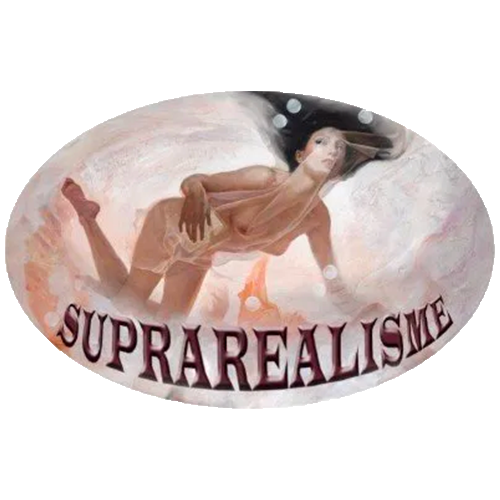Suprarealism
AND HYPERREALISTIC
Suprarealism and Hyperrealism
Since the 1970s, artists such as Chuck Close, Ron Mueck and Richard Estes have been working to create larger-than-life works under the banner of hyperrealism.
The term, popularized in 1973 by the Belgian gallery owner Isy Brachot, brings together hundreds of meticulous artists, whose work derives from photorealism.
Photorealism is a school of painting in vogue between the end of the 1960s and the beginning of the 1970s.
In opposition to abstract expressionism and minimalism, on the margins of Pop art,
artists including John Baeder, Chuck Close, Charles Bell and Audrey Flack
reproduce photographs with unparalleled accuracy.
However, photorealists do not limit themselves to the reproduction of photographs: they bring together several and draw inspiration from the whole to produce unique images.
Inspired by aesthetics and photorealistic principles,
the hyperrealists push the experience further: from photographs,
they create paintings or sculptures that go beyond reality,
for example by showing details that would be impossible to see with the naked eye.
Ron Mueck's sculptures represent perfectly proportioned humans,
except that they are either tiny or huge.
In his gigantic sculptures, one can observe every pore of skin and every hair,
which would not be visible to the naked eye.
Duane Hanson, another hyperrealist sculptor,
following the technique of Georges Segal, molds his sculptures on living models,
to ensure flawless realism.
Hyperrealistic sculptors prefer resin and fiberglass over traditional sculpting materials because they are more malleable and more detail-oriented..
Why is Suprarealism contemporary art?
Suprarealism is the contemporary art of our time.
Suprarealism is part of the essential art, today, at the time of planetary problems, because art is the only way to touch the bottom of our conscious and unconscious.
The actual image directly touches the bottom of the soul.
It is worth more than all speeches and official demonstrations.
This is important, because you would have to accept sacrifices.
The hyperrealists, such as Chuck Close, Ron Mueck, Denis Peterson and Latif Maulan, were inspired by the techniques of photorealism to create works, whether in painting or sculpture, perfectly imitating, and even exceeding, the reality.
Suprarealism and hyperrealism, The difference is essential
The difference between suprarealism and hyperrealism lies in the expression of the work,
it is the very essence of creation.
If hyperrealism is a presentation of external reality,
as everyone sees it with open eyes,
suprarealism emerges from the supra-conscious with eyes closed.
It is the fruit of our sensitive inner journey, in each of us.
He is our unknown essence, sometimes fleeting, but substantial.
It is an improbable reality, but so real that we believe in it.
Sandorfi who has been classified among the hyperrealists is a suprarealist artist.
István Sándorfi (1948-2007), was at the height of the popularity of the Hyperrealist movement in which he did not recognize himself.
The harmonic unity is formed in Sándorfi only as an appearance, even an appearance which reveals itself.
The subject of the paintings is precisely not reality, but fiction.
They are far from direct representations. It is not even the imagination that appears, but the illusion of the imagination.
Do you know that skill in art has nothing to do with craftsmanship? The work is created deep in the soul of the artist,
but the know-how is the basis of any authentic work.
It is a benchmark on which the creation of an era is based. Without it, everything could be considered art.
Without it, values remain subjective, but above all speculative.















